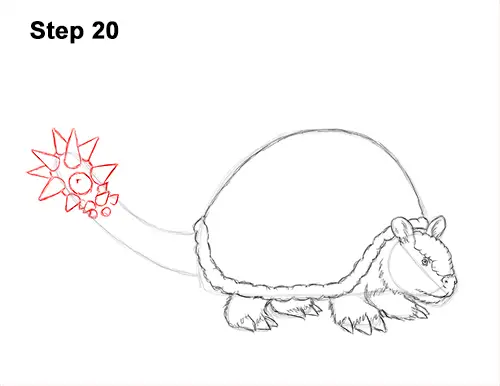
Step 20: Draw a series of thin, triangular shapes along the tip of the doedicurus' tail for the spiked club at the end of it. The shapes should be similar to thin cones with a rounded bottom. The spikes in the middle that are facing the viewer should be more circular. Don't draw the bottom base for spikes that are on the other side of the tail.
Make the spikes smaller the farther down the tail they are. Draw a few more spikes between the first spikes to make the tail more densely covered. Doedicurus was a glyptodont (sub-family) that had a spiky tail. The genus Glyptodon didn't have spikes on its tail. The spikes at the bottom should be tiny. Darken the shape of the tail between the spikes.
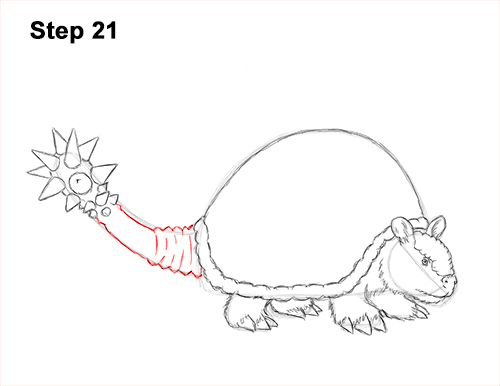
Step 21: Darken the initial guides below the spikes to create the rest of the doedicurus' tail. Use a series of angled lines near the base of the tail to give the shape more texture. Add a few short lines inside the shape along the base for creases on the tail.
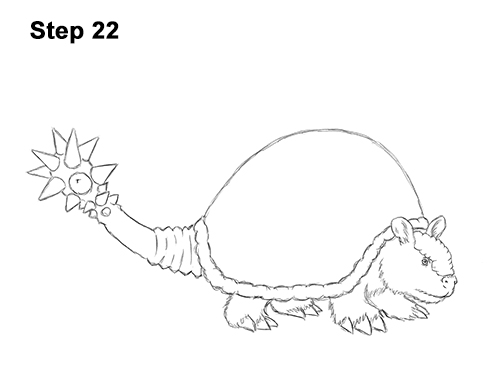
Step 22: For a cleaner look, erase as much as you can of the initial guide lines. Don't worry about erasing all of the guides. It's okay to leave some behind. Re-draw any final sketch lines you may have accidentally erased.
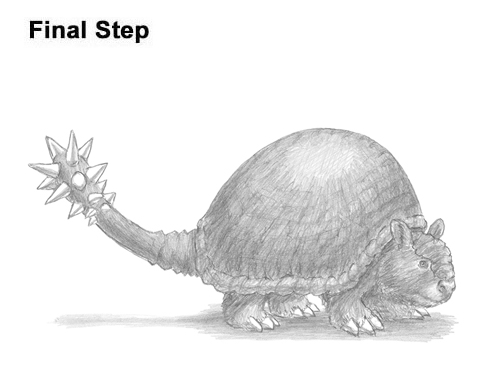
Final Step: Add some shading to your doedicurus' drawing for extra detail. Use a medium value all over the body but leave the spikes blank. As you shade the shell, use strokes that conform to the shape for a more dome-like appearance. Use a light value at the top of the dome to give it shine and a rounder look. Use a series of short strokes as you shade the feet and head for a furry texture. For a more detailed guide on how to shade, check out this tutorial: How to shade.
Add some shadows to your doedicurus' drawing to give it more dimension and volume. Give each spike a stripe along the bottom edge to make them more three-dimensional. Pick the direction of the light source when shading so that the shadows are consistent with it. Vary the pressure on your pencil to get different degrees of tonal value.
Add an extra-dark value to the sections directly under the glyptodon's shell. As you shade the bony cap on the head, draw a few lines across it for ridges and grooves. Add a series of short lines inside the shell to give it more texture too. Shading can be time-consuming, so be patient and take breaks.
Add a cast shadow underneath. This helps to ground the glyptodon so it doesn't appear to be floating. Continue to add more value throughout the doedicurus' body until you're happy with the result. Don't forget to pause the video after each step to draw at your own pace.
Thanks for visiting! Subscribe to the How2DrawAnimals YouTube Channel for a new tutorial every week.
To learn how to draw popular cartoon characters, visit EasyDrawingTutorials.com.
RELATED TUTORIALS
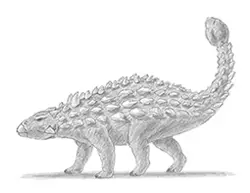 |
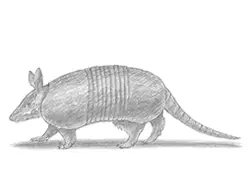 |
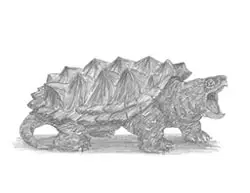 |







